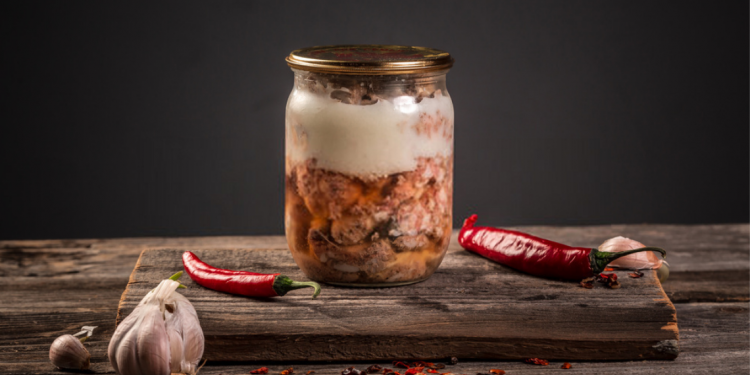We are all aware of canned, bottled and jarred packaged goods nowadays. This is relatively common for us now, but it was not always like this. It was a device designed to assist people inefficiently transporting items.
As the globalization of transportation and mobility of people has increased, so has the globalization of products. People used to carry their belongings with them when they moved from one location to another. Every culture, notably cooking styles, was transmitted over the world in this way. All of this resulted in commercial opportunities as individuals began to produce things from many cultures in various places of the world.
The problem was figuring out how to get these things to the consumers. This was when the concept of packaged commodities in bottles and jars was first offered to the market.
Source: techdailymagzines.com
Packed goods in bottles and jars
The concept of bottled and jarred packaged items quickly gained popularity because it made transporting goods more convenient and efficient. Liquids could be transported easily and without spilling, thanks to bottles and jars. It made it possible for people to transport liquid and moist meals without causing any bother or risk of spilling the food.
We now have various options for packaging and transporting goods, but each method has advantages and disadvantages. These advantages and disadvantages are dependent on what is contained in those bottles and jars.
Let us look at packaged items, or more specifically bottled and jarred packaged goods.
What do you mean by packaged goods?
Packaged goods, often known as consumer packaged products, are items that individuals use daily. These are things that suit the requirements of customers for everyday products in tiny quantities.
Packaged goods and ready-to-use products are manufactured, but not in large quantities. Their design is for individual usage, but anyone can specify their customization requirements and use it accordingly.
Packaging is used to protect items from damage during transit, theft, and contamination and maintain the integrity of the product being packaged.
Consumers utilize and prefer packaged items because they are convenient to transport, store, and use. Packaged goods eliminate the need to purchase vast quantities of things and then battle to store, preserve, and transport them.
Packaged goods, such as bottled and jarred packaged items, come in various sizes and amounts, allowing customers to purchase them as needed.
The ability to move various items worldwide by any mode of transportation was made possible by the packaging of goods.
What are packaged items that are bottled or jarred?
Products sold in plastic bottles or glass jars are referred to as bottled and jarred packaged goods. These items could be whatever you require in your daily life. It might be anything from your hair oil to your floor cleaner to your detergent powder to your dishwasher to your medicines. However, food items are the most concentrated bottled and jarred packaged goods.
Packaged drinking water is a clear and famous example of packaged food. We are all familiar with packaged goods. Caffeine powder, ketchup bottles, squashes, jams, pickles, oil, frozen vegetables, fruits, and various other foods come in bottles or jars.
Bottled and jarred packaged items from an industrial or corporate perspective:
For customers and the manufacturing and packaging sectors, bottled and jarred packaged goods represent a revolution. In today’s world, we may find a wide variety of packaging options. This, too, is dependent on the product to be packed. The ultimate goal, though, is to keep the goods from spoiling.
When manufacturers develop things, their primary aim is to provide consumers with products of the same high quality. Packaging businesses played a significant role in assisting this; they offered the option of packing goods in tiny amounts to meet the needs of consumers.
The need for bottled and jarred packaged goods increased due to this popularity, whether in the healthcare or household fields.
The food business is the most positively impacted, as bottled and jarred packaging provides them with a new trustworthy and better way to store food, regardless of the type of food.
Importance of product packaging:
The packaging serves as the product’s introduction to the consumer. The packaging of items has several advantages. Let us take a look at the importance of adequately packaging items.
Proper packaging protects things from the inside out. The products must be kept safe while being transported from one location to another. It eliminates or reduces the risk of damage to the products during shipment.
As a result, the goods’ packing must be trustworthy. The integrity of the product is ensured by seal-lock product packaging.
A functional feature of goods packaging, according to marketing methods, is that it promotes the goods and gives a better showcase. A good package contains a lot of information about the product. It enhances the likelihood that a consumer will purchase a product solely based on its packaging.
Attractive packaging might help you reach a larger audience. Consumers respond favorably to well-designed product packaging, and they are more likely to purchase it. As a result, the packaging design is just as crucial as the items’ safety.
Which is preferable: glass jars or plastic bottles?
Glass jars have the following benefits:
Glass jars have the advantage of being resistant to rust and other types of damage. Environmental changes do not affect them. Glass is better for preserving food. If properly washed, they can last a long time. They are recyclable.
Glass jar has several drawbacks. For starters, they are pretty expensive.
Benefits of plastic bottles:
Because plastic is such a versatile material, it can be customized to fit the bottle’s contents. It guards against changes in the environment. Everyone can cope with it.
Plastic bottles have the following drawbacks: They are damaging to the environment because they are non-biodegradable. Some plastic packaging is not recyclable or reusable.
Source: sks-bottles.com
Summary:
Packaged items in bottles and jars go through several steps. Food, in particular, goes through several stages that are devoid of microorganism growth conditions. However, these treatments reduce the nutritional content of the food.











